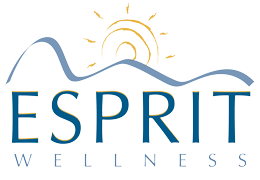Today, massage therapy is often seen as a luxury rather than a necessity. However, for centuries massages have been used to help enhance well being and treat a wide range of health concerns. While massages do offer you the chance to relax, unwind, and rejuvenate your mind and body, they also offer a variety of other advantages that are quite often overlooked. In this guide you’ll learn about some of the most common types of massage therapy, as well as the many benefits that massages offer.
Types of Massages…
Swedish
A Gentle form of massage that uses kneading, stroking, and circular motions. It is typically ideal for relaxation purposes, as it can allow for significant stress relief. However, it can also help to reduce pain and discomfort caused by tense or strained muscles. While it is generally regarded as a more mild form of massage, deeper pressure can be used when it may provide added benefit.
Deep Tissue
Utilizes firmer and slower movements that are intended to penetrate
deeper into the muscle tissue. This type of massage is ideal for those who have sustained injury or have muscles that require a bit more attention (such as those that may have adhesions). Some techniques used in Deep Tissue can also be found in the the Swedish massage repertoire. However, there are other motions that involve cross fiber techniques that release tension deep within the muscle layers.
Trigger Point
This is typically a complementary therapy that is used in conjunction with another massage modality. However, it can also be used on its own to address specific health concerns. During a Trigger Point session problematic areas will be identified, usually where there are hyper tense muscles, and pressure will be applied to a specific point along the muscle tissue. This releases built up tension and reduces chronic pain. In cases of deferred pain, the trigger point may located elsewhere on the patient’s body. For example, a patient experiencing lower back pain may actually benefit from trigger point therapy performed on their shoulder region.
Sports
Uses vigorous and focused techniques that target specific muscle groups. This form of massage is often used for athletes and those who are preparing for sporting events, as it helps to improve performance. For instance, a runner may receive a Sports massage before a marathon that concentrates on their hamstrings and gluteal muscles. This form of massage can also be used in rehabilitation, due to the fact that it may help to reduce recovery time.
Benefits of Massages…
Reduces Muscle Tension
Massage therapy can relieve tense muscles and loosen tight ligaments, making it an ideal addition to virtually any pain management protocol. Massages can benefit those who suffer from chronic pain, hyper tense muscles, or stiffness. Whether the pain or discomfort is being caused by stress, overuse, or injury, regular massage treatments can help to reduce muscle tension by improving circulation to affected muscle groups and eliminating adhesions.
Promotes Good Posture
A Massage relaxes body tissue and improves muscle strength, which provides enhanced support while you’re sitting, standing, or lying down. Massage therapy also helps to improve joint health, which allows your body to regain its natural posture. Muscles that have been negatively impacted by poor posture, such as those made sore by slouching, can be alleviated and retrained.
Improves Blood and Oxygen Flow
One of the most significant health benefits of a massage is improved circulation. Long gliding motions and slow circular movements made by the practitioner help to speed the flow of blood and oxygen to your body’s vital tissues, which helps its systems to function more efficiently. Massages can also help to lower blood pressure, especially in the case of those suffering from stress related hypertension.
Helps to Improve Range of Motion
Many of the techniques used in massages help to elongate and stretch muscle tissue. This can increase range of motion significantly and even improve your flexibility. By focusing on connective tissues, tendons, and ligaments, a massage practitioner can make joints more pliable, which helps to prevent injury and increase overall mobility.
Alleviates Stress and Anxiety
While there are a myriad of physical massage benefits, there are also emotional and mental advantages associated with regular massages. It can help to enhance mood and even alleviate stress by lowering cortisol levels and releasing endorphins. As such, those who suffer from frequent anxiety or panic attacks may benefit from regular massage therapy treatments.
Accelerates Healing
Due to the fact that massages can boost circulatory, muscle, and joint health, it is a great addition to post-op or injury care. By pumping oxygen and blood to injured areas, your body gains the ability to heal itself more quickly and efficiently. In addition, joints and muscles that are more pliable are likely to recover more rapidly, given that they have an increased range of motion and flexibility.
Improves Immune System Health
Massages flush lactic acid away from the muscles and boost lymph system function. Through this process metabolic waste is carried away from your body’s organs and tissues, which leads to improved immunity. So, if you’ve been suffering from frequent illness, massage therapy may be able to help you not only fend off foreign bodies, but to recover more quickly.
Enlisting the aid of a trained massage professional can give you the opportunity to experience the wide range of full body massage benefits. It can also enable you to boost your wellness and strengthen your mind-body connection. It’s often best to try a variety of different modalities, in order to determine which one will help with your particular health concerns. Also, you’ll want to schedule regular massages to maintain and maximize the health benefits it offers.
